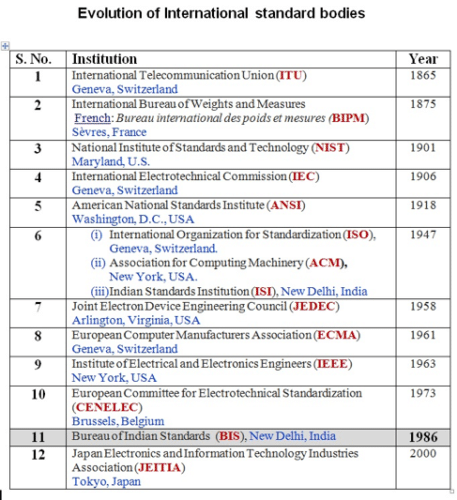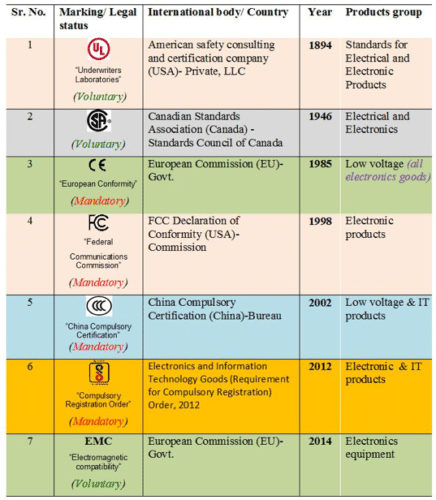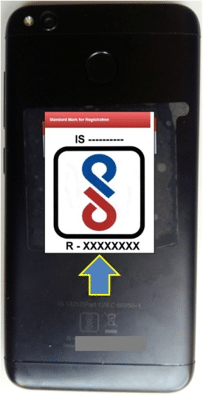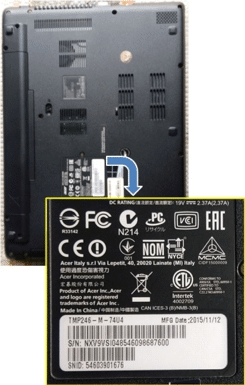The aim of the article is to spread safety awareness among consumers, manufacturers, importers, and traders of electronics and IT goods. Moreover, it is indented to provide a brief overview on the world of standards, national/international markings which ensures safety and quality of products, their origin, and their significance in the era of globalization.
Global scenario
The world of electronics and information technology is growing very fast and dynamic changes are taking place in the world arena. Like India, all over the world, the market is being flooded with different type of electronic goods (cheap as well as quality products). However, there is a considerable difference in mindsets of the consumers of developed and developing countries. In developing countries, mostly price of the product remains one of major deciding factors during any purchase over the safety and quality concerns. On the other hand, in developed countries, usually consumer pays more attention on safety and quality of the products than other relevant parameters. Moreover, the manufacturers and governments are also quite pro-active to maintain standard and take safety measures for all types of gadgets and home/industry appliances. Such type of sentiments usually remains major dominating factors behind the momentum of market and the game of demand and supply becomes concentric around it.
Indian market scenario
Safety awareness regarding electronics and IT products is at inception stage among Indian consumers. Once in a while, electronic Medias or featured articles in newspapers/ magazines draw attention and sometimes people use to think around and discuss over general aspects of safety-related issues, like, what should be safe distance to watch TV; safe conditions to use Desk Top/Lap Top for a long time; precautions regarding the use of mobile etc. Notwithstanding, the large Indian market is driven by prize cautious consumers rather than safety and quality cautious peoples. It is well experienced that even, so-called well-educated smart people do not pay much attention towards safety aspects of the most popular electronics gadgets, like mobile, laptop, microwave oven, TV, etc.
However, the situation is slightly different for electrical home appliances. For example, whenever you go to buy an immersion rode or electric iron, apart from required power ratings, you might have been searching for “ISI mark over it, why? Perhaps, it is because that many of us sub-consciously believe that if any electrical home appliance is bearing an “ISI” mark over it, means, it is much safer than the stuff with no mark. We even get ready to pay slightly more money for the product bearing the ISI mark. So, what it indicates? It reveals that we are cautious and have safety concerns regarding “electrical appliances”, which is forcing our mind to think over it. Interestingly, the change has not occurred overnight, rather, it took a long time to educate people about the importance of “ISI” mark and now the consumer know that the mark is a symbol of safety. It is because, anybody cannot use the mark voluntarily; instead, a manufacturer/importer can affix “ISI” mark on his product only after getting a license from BIS (Bureau of Indian Standards).
Safety concerns at a glance
Apart from the normal electronics gadgets, the craze of wearable electronics is gaining momentum; hence, the safety concerns of electronic gadgets become more important. Although, the trend is influencing all age groups children are being more vulnerable than others. The use of electronic gadgets among children has been reached a revolutionary stage. As a result, children are suffering from various health issues, like back pain, weak eyesight etc. There are several things, which may affect our body considerably including, safety hazards like electric shock, electromagnetic emission, UV emission, blue light hazard etc. Such parameters need to be checked critically before allowing the product into the market.
The footsteps towards change
A bright part of the gray story is that an ecosystem has been developed during last few years. During parching of home appliances and electronic gadgets, the Indian consumer now sometimes may be seen wandering and asking for standard marks like ISI mark (for electrical safety and performance), BEE (Bureau of Energy Efficiency) star rating (for performance) and BIS Registration No. with Standard mark (for safety standards in electronics & IT). Apart from the aforementioned markings, there are certain international standard markings on products. Their markings are well established and trusted across the globe. We will discuss these international standard marking in next section.
Standards and their significance
A word “standards” has been used at many places in this article which may be rising many questions, like what is standards? What is their requirement? How are they influencing our day-to-day life? etc. Let us examine the things step-by-step.
Standards
Basically, standards set out specific characteristics of a product — such as its size, shape, design, functions, and performance, or the way it is labeled or packaged before it is put on sale. In short, if a product is conforming to a relevant standard, it implies that major and essential parameters of safety, quality and performance are taken care before launching it into the market.
Sources of standards
According to a general statement on Internet, it is like a symphony and it takes a lot of people working together to develop a standard. The experts from a technical committee that is responsible for a specific subject area. They begin the process with the development of a draft that meets a specific market need. It is a continuous process and dedicated organizations like ISO (International Organization for Standardization), IEC (International Electrotechnical Commission), IEEE (Institute of Electrical and Electronics Engineers) etc. are playing a key role in this arena. Standards are everywhere and playing an important role in our life, by facilitating business interaction, creating eco-system for safe and quality products. According to IEC, “International Standards reflect agreements on the technical description of the characteristics to be fulfilled by the product, system, service or object in question.”
Almost every country has its own dedicated department/institution/organization to develop or harmonize their standards with the international players, IEC, ISO, IEEE etc. for every demanding product/process/field. For ready reference, Fig. 1, illustrates the list of few most influential and well-known government/non-government organization in the world.

Historically, the journey was started in 1865 when the first standard body, ITU was formally embellished in the field of telecommunication. Consequently, the list keeps on increasing with the potential demand and awareness in the global society regarding standardization. Meanwhile, India has also emerged in the world of standardization and ISI (Indian Standards Institution) was formally established in 1947. Now, Indian standards are maintained by BIS which was established in 1986.
Symbols of conformity
To get the standard mark, a manufacturer/importer has to follow conformity assessment procedure of the country where he wants to sell/import the products. The conformity of a product is assessed by the authorized national/international bodies before it is placed on the market. It needs to demonstrate that all legislative requirements are met. It includes testing, inspection, and certification. The procedure for each product is specified in the applicable product legislation. In other words, these standard marks/symbols indicate specific administrative/regulatory measures taken by a particular country/group of counties to ensure quality and safety of the products which are being imported/soled in their territory or even across the globe. Fig. 2 depicts different popular standard marks (specifically for electronics & IT products) issued from different countries/international regulators/standard bodies.

Let us take an example; Fig. 3, illustrates a rear view of two popular electronic gadgets, mobile, and laptop. In Fig 3(a), one may observe some typical marking on a bottom part of the mobile handset. A cropped part of the marking is also shown in an inset to elaborate the specifications. This is a BIS standard mark for mandatory safety standards and is issued for notified electronics & IT products under Compulsory Registration Order, 2012.

On the other hand, Fig. 3(b) depicts some of popular international standard marks/logos on a laptop. More information about these markings is given in the next sections.

BIS Standard mark
In the era of globalization, to address the safety concerns of Indian consumers and to curb the inflow of sub-standard electronic products in the country, the “Electronics and Information Technology Goods (Requirements for Compulsory Registration) Order, 2012 (CRO)” was notified by Ministry of Electronics and Information Technology (MeitY) on 03rd Oct. 2012 under the provision of Compulsory Registration Scheme (CRS) of BIS Act, 1986. This Order had come into effect from 03rd July 2013. The Order necessitates the creation of an institutional mechanism for developing and mandating standards and certification for electronic products to strengthen Quality Assessment infrastructure nationwide. Products in CRO are being notified in a phased manner. Initially, 15 electronic product categories were covered in CRO phase-I. Subsequently, vide gazette notification dated 13th November 2014, another 15 product categories were included in CRO Phase-II. Likewise, CRO Phase-III has also come into effect from May 23rd, 2018 where 13 more product categories have been covered in the scope of CRO.
As per the CRS, the manufacturer who is seeking registration of goods has to get tested his products at BIS recognized labs and need to apply for registration along with the test report and required documents. Once his registration is granted under CRS, BIS issues a unique registration number (R.No.). Thereafter, the manufacturer can affix BIS standard mark on his products. An example is shown in Fig 3(a) where “R-xxxxxxxx” indicates the R. No. and “IS 13252 (Part 1)” reveals a specific “Indian Standard” for which the product is conforming to. The list of all notified products and related other scheme details can be explored at MeitY’s website and BIS website.
International markings
A brief overview of most popular international standard marks/logos is given in Fig. 2., including marking symbol, legal status (voluntary versus mandatory), issuing authority/national/international body, year of implementation and target product groups. In the Fig. 2, one may observe that “UL”, CSA’ and ‘EMC’ standard marks fall in the category of “voluntary”. It means that the manufacturers, whose products are bearing these standard marks, have voluntarily adopted the conformity process to get these standard marks which in result make their product a “high-quality product”. It is sometimes referred to as self-declaration of conformity. Rest of the standard marks (Fig. 2) are “mandatory”, that implies; no person shall by himself or through any person on his behalf manufacture or store for sale, import, sell or distribute goods which do not conform to the specified standard and do not bear the “Standard Mark” as notified by the issuing authority for the goods.
It is evident that USA has introduced its first standard mark, i.e., UL in 1894. Subsequently, Canada, Europe and again the USA have introduced, CSA, CE and FCC standard marks respectively to standardize products in different segments. Consequently, in 2002, China came with its mandatory “China Compulsory Certification (CCC) for low voltage and IT products. Consequently, the aforementioned developments forced India to come up with its own regulation (CRO) to curb the inflow of sub-standard electronic products in the country and to protect the interest of consumers as well as domestic industry.
In nutshell
The bottom line is that government is pro-actively taking initiative to protect consumers and their rights but the response from the industry and end-user is still not up to the mark. BIS standard mark is a symbol of trust; therefore, the manufacturer should get it and display it proudly, it will enhance the brand value of their product. On the other hand, end users should ask for it, it is for them and is introduced to protect their basic rights.





